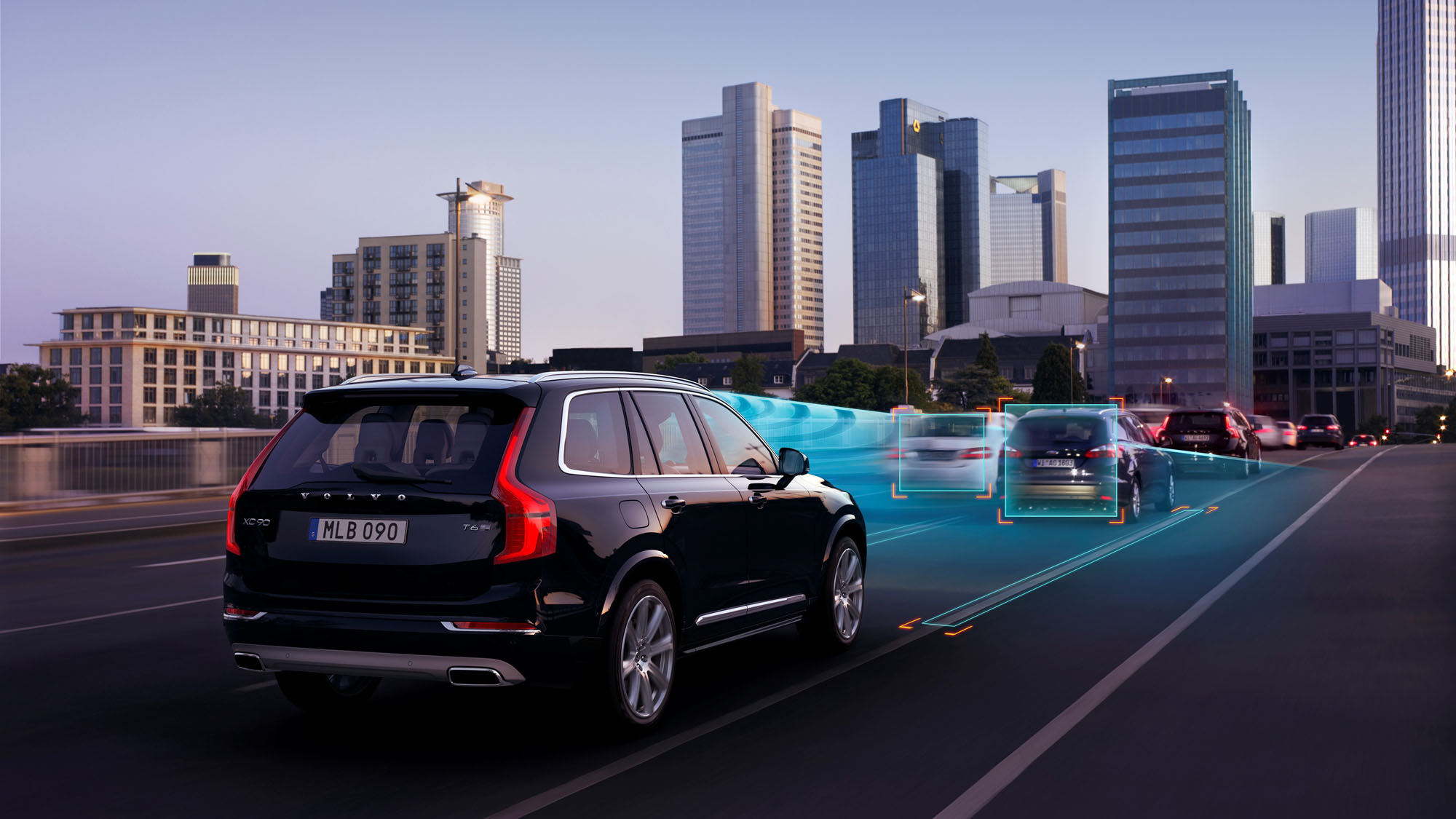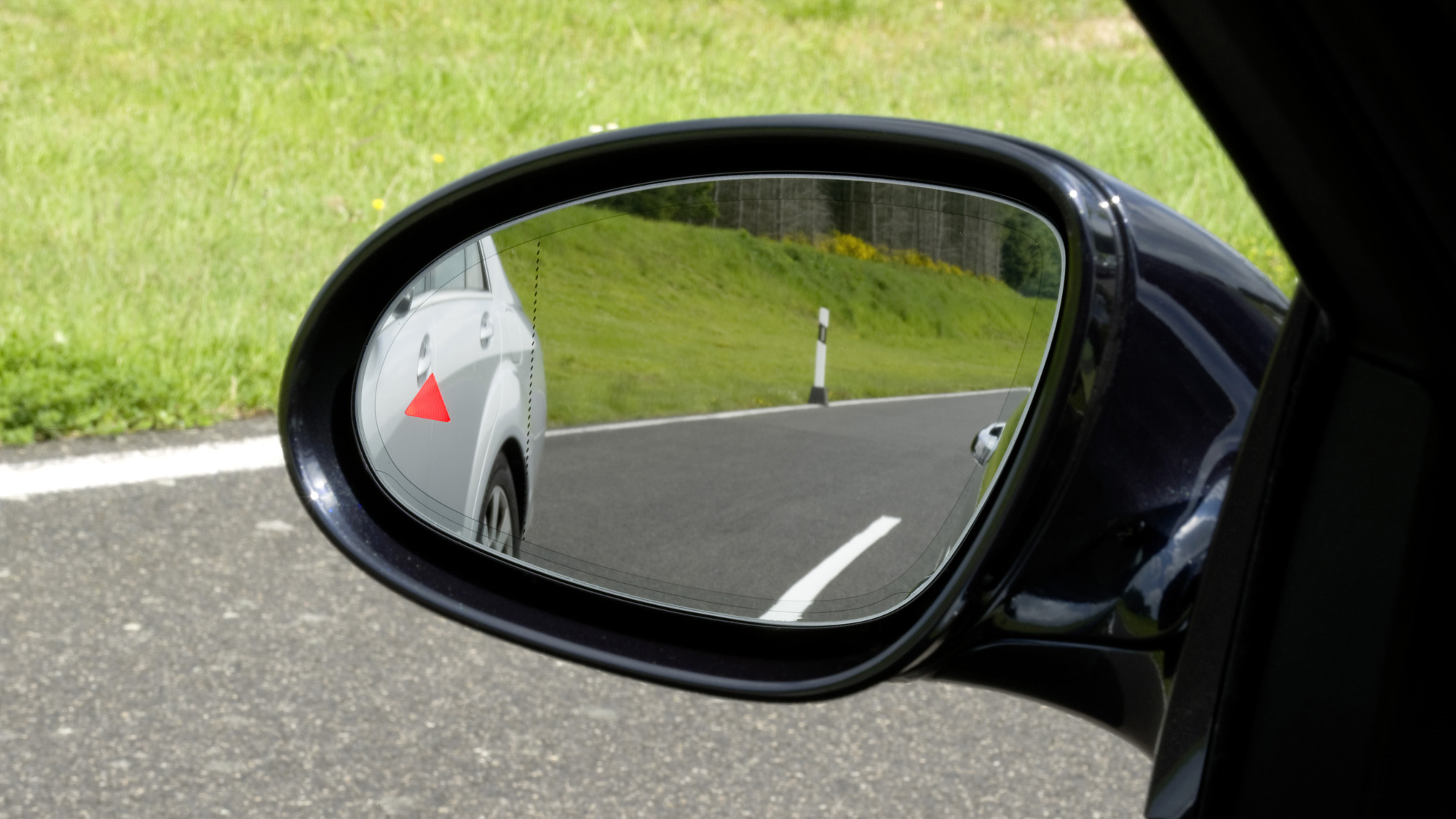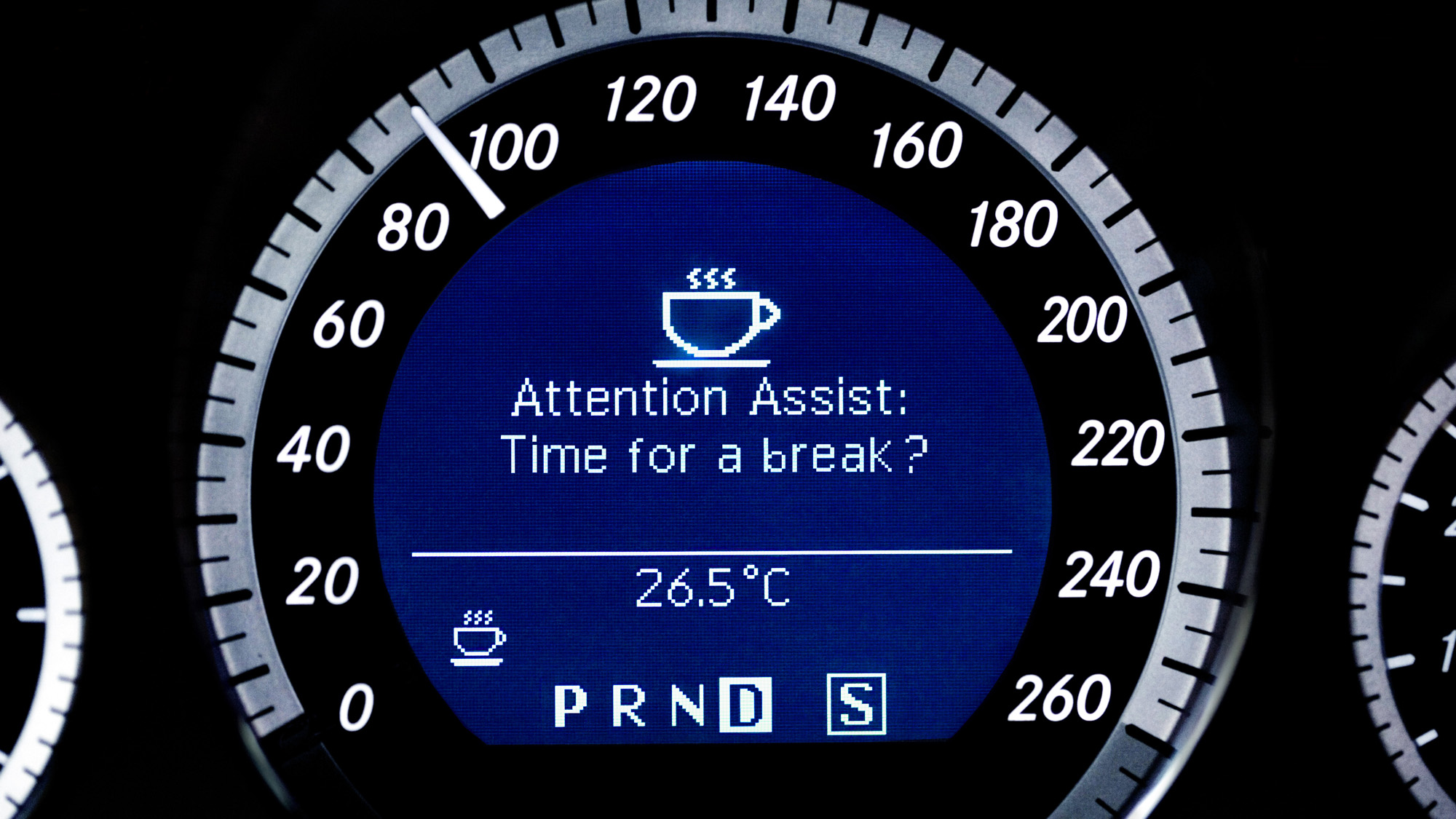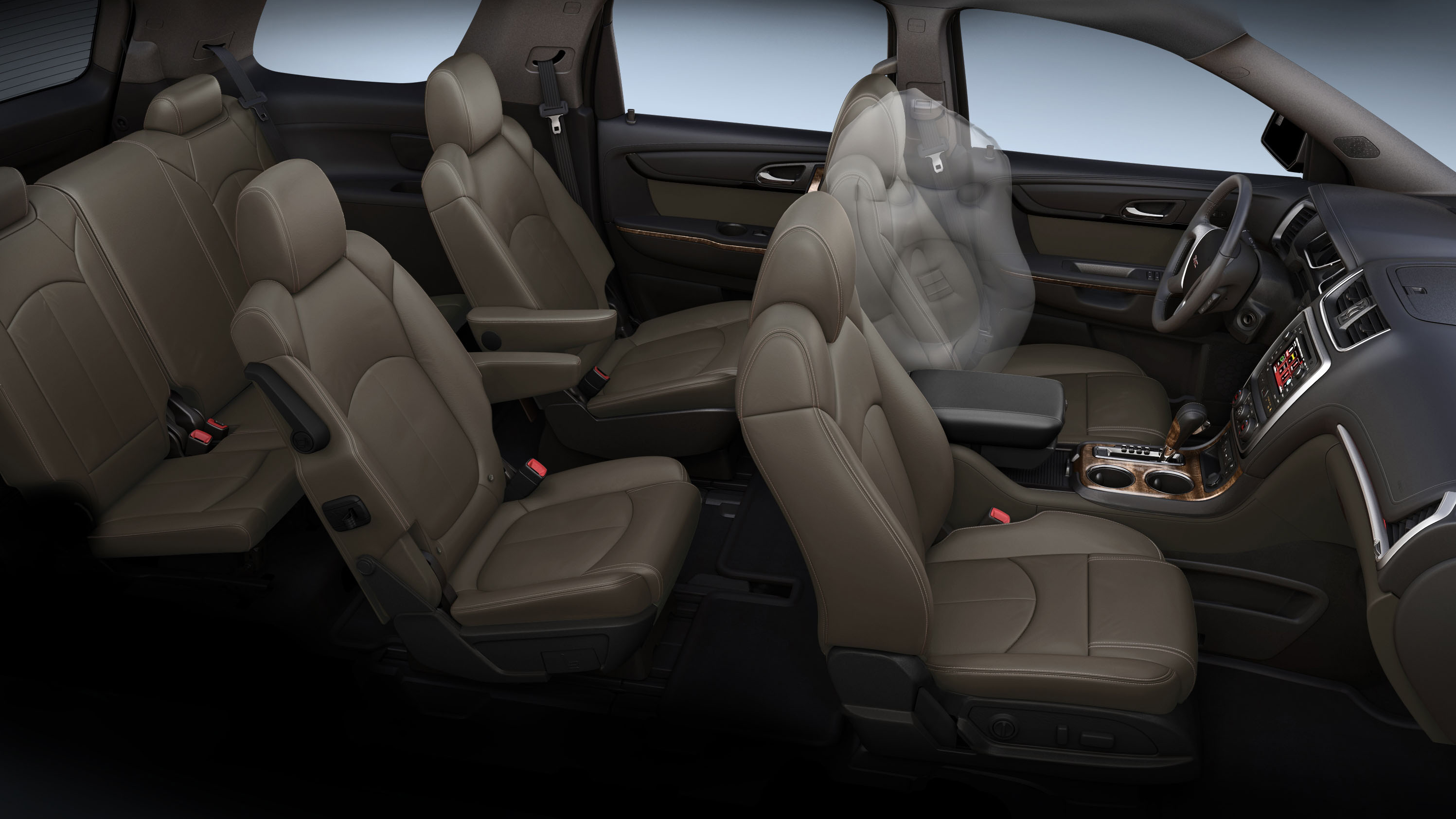If you're in the market for a new car, you've probably been exposed to a wealth of new high-tech safety features that probably aren't on your current car. Virtually every automaker offers at least some of them, and a few even include them as standard equipment. But do you really need them? And what do they actually do?
In short, they really can save your bacon, especially for new and older drivers, but it's important to know a few things off the bat. First, not all of these systems are created equal. One company's forward collision warning system, for instance, might perform better than another's. Second, one system may be more advanced than another, say, operating at higher speeds or being able to steer for you. And finally, companies will often refer to the same generic feature with their own marketing-friendly term: Toyota's Pre-Collision System and Honda's Collision Mitigation Braking System are basically the same feature as GM's more generically named Low Speed Forward Automatic Braking.
Let's take a look at some of these advanced safety features and driver aides, to see which might be most beneficial.



Most car companies now offer some sort of "emergency telematics" system, be it by connecting through your smartphone or a separate connection such as through GM's OnStar or Hyundai's BlueLink. The key element of these emergency communications systems is automatic crash notification, which automatically calls 911 should the car's airbags deploy. This can be a literal lifesaver. These systems also provide some sort of emergency call button and can remotely lock/unlock your car or help locate it should it be stolen.
When the car senses it's dark enough and there are no oncoming cars, it automatically activates the high beams to provide the brightest view forward. When a car is detected ahead, the car automatically switches the high beams off. This feature is quite often bundled with forward collision warning and all-encompassing safety tech packages.

OK, so you know what these are, but how many should there be? Those up front in the steering wheel and dash are government mandated, as are front "side airbags" that cover occupants' upper bodies. These can be located in the door or more likely seat. Virtually assured in non-convertibles are side curtain airbags that drop down from the ceiling to cover the windows and protect occupants' heads. Usually, these cover all seating rows, but there can be exceptions. From there, it largely depends on the manufacturer. There are rear side airbags that operate like those up front, knee airbags for the driver or front passenger, small side hip airbags (Mercedes-Benz), middle side airbags that prevent occupants from clonking against each other (General Motors, see photo above), seatbelt airbags (Ford) and front passenger under-seat airbags that prevent you from "submarining" under your seatbelt (Toyota). While it's hard to argue against such extra protection, it's important to ultimately compare the crash test data of rival vehicles rather than simply tally up the number of airbags.
Related Video:
In short, they really can save your bacon, especially for new and older drivers, but it's important to know a few things off the bat. First, not all of these systems are created equal. One company's forward collision warning system, for instance, might perform better than another's. Second, one system may be more advanced than another, say, operating at higher speeds or being able to steer for you. And finally, companies will often refer to the same generic feature with their own marketing-friendly term: Toyota's Pre-Collision System and Honda's Collision Mitigation Braking System are basically the same feature as GM's more generically named Low Speed Forward Automatic Braking.
Let's take a look at some of these advanced safety features and driver aides, to see which might be most beneficial.
Forward collision warning
This system scans the road ahead for stopped vehicles and alerts the driver using warning lights and noises. More advanced systems can detect pedestrians (this is usually called out by manufacturers), cyclists or animals. It's also common for multiple versions of forward collision warning to be available: Some operate only at low city speeds; some operate at all speeds; and others, with either speed parameter, pair with automatic emergency braking (see below). As forward collision warning almost always utilizes the same radar-like sensor used for adaptive cruise control, the two have traditionally been packaged together, but recently, forward collision warning has been made available by itself.Automatic emergency braking
With this, should the driver not heed the audio and visual forward collision warnings, the car can apply the brakes automatically. Again, the speeds at which the system operates can depend on the car or version opted for, but in any event, they have been proven to prevent or lessen the severity of crashes.
Brake assist
This detects when a driver has initiated a panic stop and supplements their efforts by providing full anti-lock brake stopping power. Research has shown that most drivers don't apply as much braking force as is possible in emergency braking situations, leaving something on the table that might prevent or reduce the severity of a crash. Brake assist is often standard.Blind-spot warning
Monitors your blind spots and alerts you to the presence of other cars, usually through lights in the A pillars or the side mirrors themselves (photo below). Should you try to make a lane change anyway, those lights will often flash or the car will provide an audible warning. Some systems can also steer you back into your lane as a last resort, though that is often tied to a lane-keeping system (described below). While forward collision warning and automatic braking have increasingly been added to standard features lists, blind-spot warning is almost always optional. This is perhaps because, although it's certainly a helpful system, properly set mirrors often render them a bit redundant (as do integrated blind-spot mirrors like those offered by Ford).
Rear cross-traffic alert
Almost always bundled with blind-spot warning, this alerts you to cars and other oncoming things or people approaching you from the side and rear. Basically, it lends a hand when you're backing out of a parking spot.Lane-departure warning
Senses when you're drifting out of your lane and alerts you in some way — through audible alerts, visual warnings in the gauge cluster or by vibrating the wheel or even your seat. Some systems can also detect when you're about to leave the road entirely, warning you or taking some sort of action (see below).Lane-keeping assist
This takes lane-departure warning to the next level. In addition to just warning you (and sometimes it skips the warning altogether), it will subtly steer you back into the middle of the lane. Occasionally, these systems will use subtle braking to achieve the same effect, but steering has become far more common. This is also one of those systems where the performance and quality depends on the car company — some are quite adept at naturally keeping you in your lane, while others can ping-pong you between the lane lines or be overly aggressive in providing assistance.Driver inattention monitor
This monitors you in a variety of different ways to detect whether you are being overtly distracted or falling asleep. The car can warn you and often encourages you to take a break.
Automatic crash notification
Most car companies now offer some sort of "emergency telematics" system, be it by connecting through your smartphone or a separate connection such as through GM's OnStar or Hyundai's BlueLink. The key element of these emergency communications systems is automatic crash notification, which automatically calls 911 should the car's airbags deploy. This can be a literal lifesaver. These systems also provide some sort of emergency call button and can remotely lock/unlock your car or help locate it should it be stolen.
Automatic high beams
When the car senses it's dark enough and there are no oncoming cars, it automatically activates the high beams to provide the brightest view forward. When a car is detected ahead, the car automatically switches the high beams off. This feature is quite often bundled with forward collision warning and all-encompassing safety tech packages.

Airbags
OK, so you know what these are, but how many should there be? Those up front in the steering wheel and dash are government mandated, as are front "side airbags" that cover occupants' upper bodies. These can be located in the door or more likely seat. Virtually assured in non-convertibles are side curtain airbags that drop down from the ceiling to cover the windows and protect occupants' heads. Usually, these cover all seating rows, but there can be exceptions. From there, it largely depends on the manufacturer. There are rear side airbags that operate like those up front, knee airbags for the driver or front passenger, small side hip airbags (Mercedes-Benz), middle side airbags that prevent occupants from clonking against each other (General Motors, see photo above), seatbelt airbags (Ford) and front passenger under-seat airbags that prevent you from "submarining" under your seatbelt (Toyota). While it's hard to argue against such extra protection, it's important to ultimately compare the crash test data of rival vehicles rather than simply tally up the number of airbags.
Related Video:

Sign in to post
Please sign in to leave a comment.
Continue